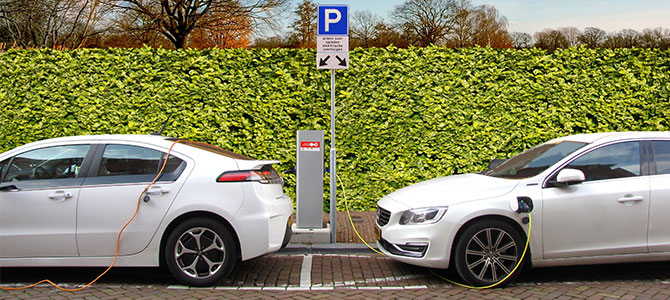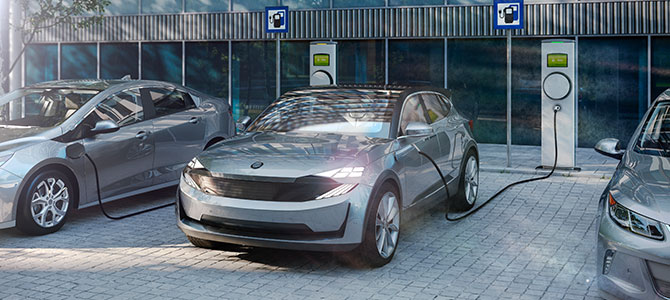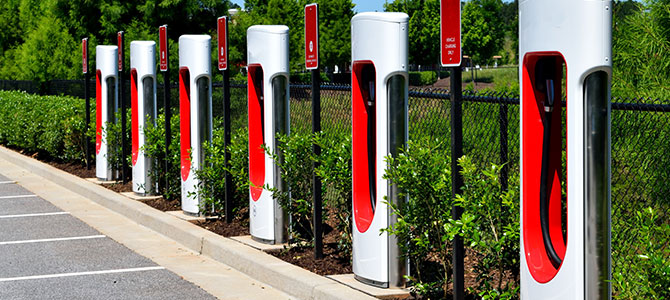As automakers reduce prices on electric vehicles, legislators enact laws to encourage electric vehicle use, and power companies create subsidies to fuel the market, the need for electric vehicle infrastructure is growing rapidly. There are many things
we need to consider when designing and building this infrastructure.

Each Level 3 charging stall requires more power than a typical home.
How Do We Design and Build Electric Vehicle Infrastructure?
Getting power to our clients’ charging stations is a primary concern—a charging stall can require more power than a typical home and an average charging location may include six stalls. We coordinate with utility companies to understand power
limitations and opportunities, including providing new utility service to a site or upgrading existing service. We work with our clients to shape the charging station’s location, number of charge stalls (or posts), parking layouts, and to create
a positive customer experience.
Once we’ve confirmed the layout and that we can get enough electricity to the site, we prepare the final design and coordinate with utility companies and local jurisdictions for permitting and approvals. This has been one of the bigger challenges
for me, because there are so many different municipalities that we work with to get the permits and approvals. Each site may require zoning board approval, planning board approval, and site plan review, as well as building and electrical permits.
Each municipality has its own standards and guidelines, so depending on the locality we’re working in, we have to design to meet those specific requirements.
Where Should Charging Stations be Located?
A big consideration for the client is where to build these charging stations. We’ve found the most successful locations tend to be shopping centers, outdoor malls, parking garages, and other places people are spending at least 30 minutes. These
locations are ideal, because people can be shopping or eating at a restaurant while their car is charging. We’re also designing stations in travel plazas for when people are making longer trips on highways. Drivers like access to restrooms,
food, and a cup of coffee.
As the electric vehicle market continues to grow, I think it’s important for our clients to plan for the future. They might only need four charging stalls right now, but in two years that number might double, so we design to scale up as the adoption
of electric vehicles rises.

This infrastructure is being built in shopping centers, restaurant parking lots, parking garages, travel plazas, and off of major highways.
The Future of Electric Vehicle Infrastructure
I think the quote “If you build it, they will come” describes the future of electric vehicles. A major barrier to large-scale electric vehicle adoption is “range anxiety,” a fear that a vehicle will run out of charge before reaching
a charging station.
State governments and other stakeholders are forming partnerships to incentivize the build-out of infrastructure. For example, New Jersey recently announced the New Jersey Partnership to Plug-In. The Partnership, co-led by the New Jersey Board of Public
Utilities, New Jersey Department of Environmental Protection, and the New Jersey Economic Development Authority, creates a strategic and streamlined framework to support New Jersey’s electric vehicle ecosystem, with the goal of registering 330,000
zero emission vehicles by 2025.
I wonder if charging stations will someday be like gas stations, where we see them on every corner.

As electric vehicle purchases continue to grow, we think ahead for our clients, so that stations can scale up without significant investment.